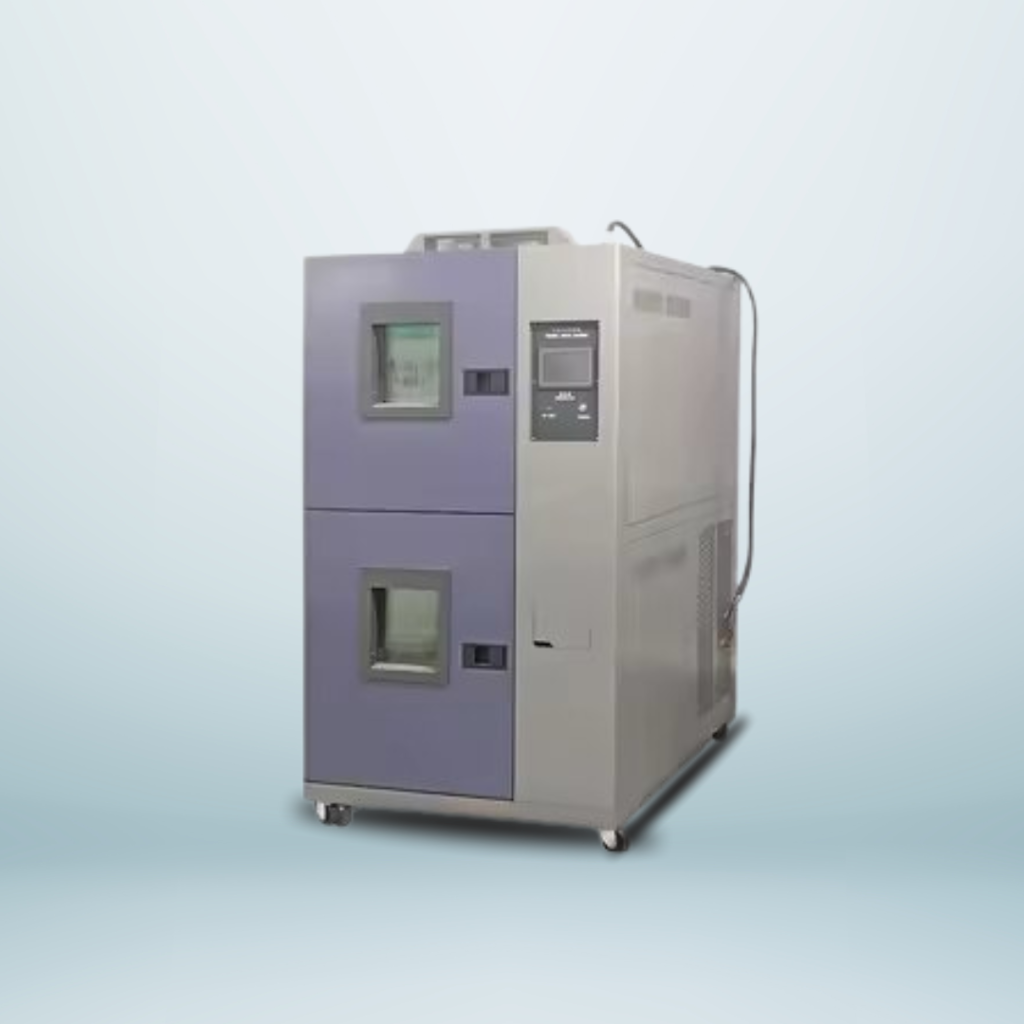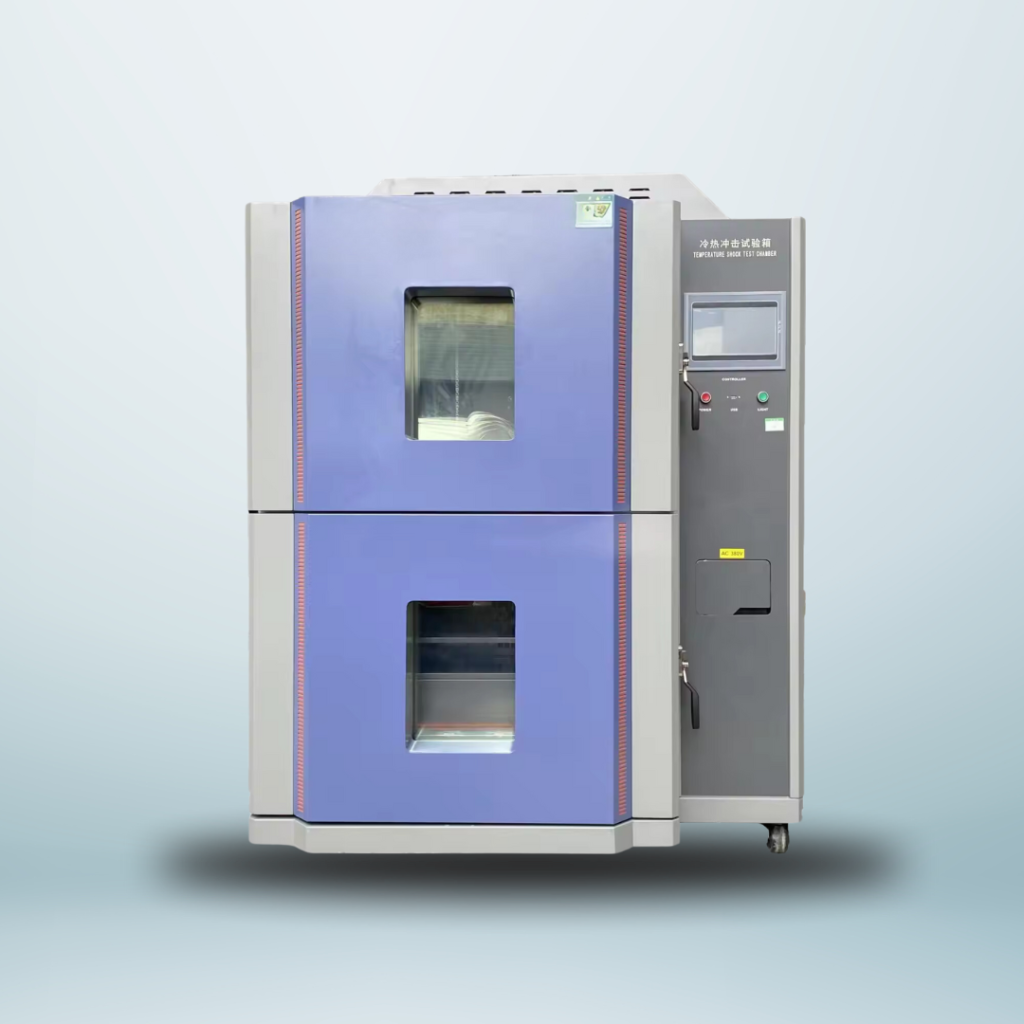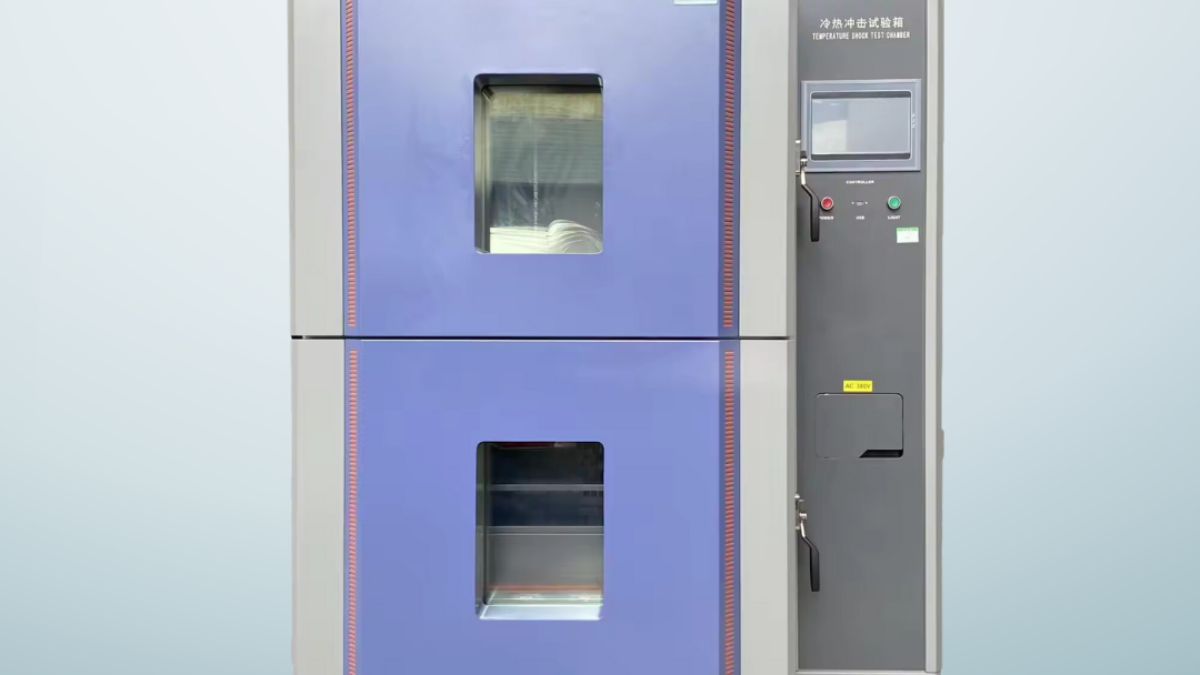Thermal Shock Testing As per standard IEC 60068
Thermal Shock Testing According to IEC 60068: Ensuring Material Reliability Under Rapid Temperature Changes
Introduction
- In today’s advanced engineering and manufacturing industries, materials and components are expected to perform reliably under various environmental conditions. One of the most severe and challenging conditions is exposure to rapid temperature changes, known as thermal shock. IEC 60068, a key international standard, outlines the procedure for thermal shock testing, which is critical for ensuring the longevity and performance of materials subjected to these extreme conditions.

Understanding Thermal Shock:
Thermal shock occurs when a material is subjected to rapid temperature fluctuations, leading to significant thermal stress. These sudden changes cause expansion and contraction of the material at different rates, often leading to structural failures such as cracking, warping, or surface delamination. Testing for thermal shock resistance ensures that materials can maintain their structural and functional integrity when exposed to these stresses.
IEC 60068 Overview:
IEC 60068 is a comprehensive standard that covers a wide range of environmental tests, including temperature and humidity tests, designed to assess the reliability of products under different environmental conditions. Specifically, IEC 60068-2-14 focuses on thermal shock testing, providing detailed guidelines on how to simulate real-life rapid temperature changes and their effects on materials and components.
Key Aspects of Thermal Shock Testing According to IEC 60068:
- Specimen Preparation: Materials or components to be tested are prepared in accordance with the standard’s guidelines. The shape, size, and condition of the test samples must be representative of their final application to ensure accurate results.
- Temperature Extremes: The test involves exposing the specimen to two temperature extremes. For example, a component may be subjected to temperatures as low as -55°C and then rapidly transferred to an environment as high as +150°C. The actual temperature range depends on the product’s intended operational conditions.
- Rapid Temperature Transitions: The hallmark of thermal shock testing is the speed of the temperature transitions. The transfer between hot and cold environments must happen in seconds, simulating real-world scenarios where rapid temperature changes occur. This could be, for instance, a device moving from a freezing outdoor environment into a heated indoor space, or an engine component quickly cooling after shutdown.
- Dwell Time: During testing, the specimen remains in each extreme temperature environment for a predetermined period (dwell time). This allows the material to stabilize at the test temperature, ensuring that the full extent of thermal stress is applied. Typically, dwell times can range from 10 to 30 minutes, depending on the test material.
- Number of Cycles: The number of thermal shock cycles is specified based on the expected operational life and environmental exposure of the material or product. A higher number of cycles indicates a more rigorous test, simulating years of thermal cycling within a short period. Components are usually subjected to multiple cycles to evaluate how well they can withstand repeated thermal shocks.
- Evaluation Criteria: After each cycle or at the conclusion of testing, the material is evaluated for visible defects such as cracks, warping, or delamination. In addition to visual inspections, functional testing is often performed to ensure that the material or component still meets operational requirements after exposure to thermal shock.
Importance of Thermal Shock Testing:
Reliability and Durability: Thermal shock testing is crucial for assessing the long-term reliability of materials and components, particularly in industries where temperature extremes are a daily reality. This testing helps ensure that products won’t fail unexpectedly in real-world applications.
Preventing Catastrophic Failures: Materials that are not tested for thermal shock resistance can fail catastrophically when exposed to sudden temperature changes. For example, electronic components may develop micro-cracks that lead to electrical failures, or structural components may warp, compromising their mechanical strength.
Industries Benefitting from IEC 60068 Testing: Thermal shock testing is applied across numerous industries, including:
- Aerospace: Components in aircraft experience rapid temperature changes during takeoff and landing, making thermal shock testing essential for safety.
- Automotive: Engine parts, especially in internal combustion engines, are subjected to extreme thermal cycling.
- Electronics: Circuit boards and semiconductors must be tested to ensure they can handle rapid temperature fluctuations without losing functionality.
- Construction Materials: Certain building materials need to resist thermal shock to ensure longevity, especially in regions with extreme seasonal temperature differences.
Advantages of Complying with IEC 60068:
International Acceptance: By adhering to the IEC 60068 standard, manufacturers can ensure their products meet globally recognized benchmarks for durability and performance. This helps in gaining market acceptance and regulatory approvals across different countries.
Improved Product Design: Thermal shock testing under this standard provides valuable feedback that can be used to improve product designs, ensuring that materials and components are better suited to withstand environmental stress over their lifecycle.
Cost Efficiency: Conducting thermal shock tests early in the product development cycle can save manufacturers from costly recalls or warranty claims caused by product failure in the field. By identifying weaknesses in the material early on, manufacturers can make necessary adjustments to improve performance before mass production.

Conclusion
- Thermal shock testing according to IEC 60068 is a vital process in ensuring the reliability and durability of materials and components subjected to extreme temperature variations. By adhering to this standard, manufacturers can ensure that their products are robust enough to handle rapid thermal changes without compromising functionality or structural integrity. Whether in aerospace, automotive, electronics, or construction, this testing helps companies build safer, more reliable products for the global market.

